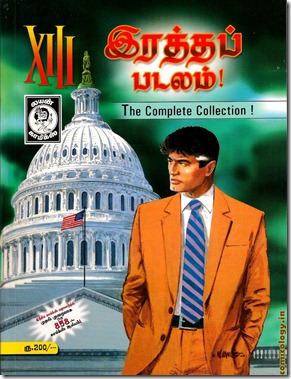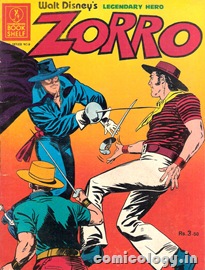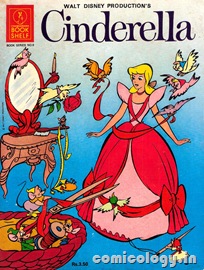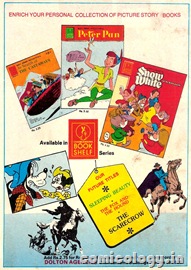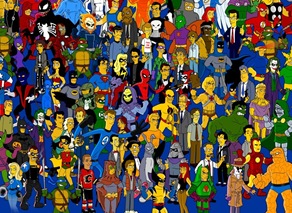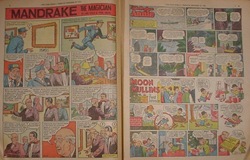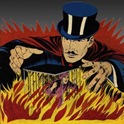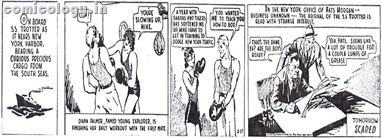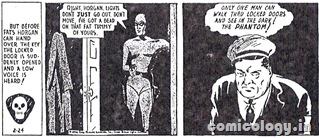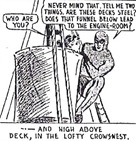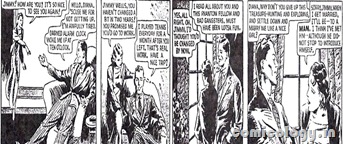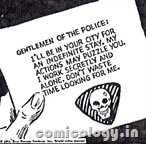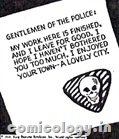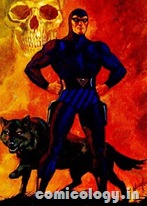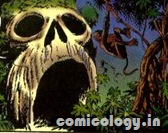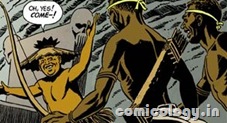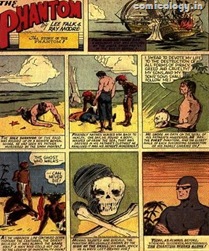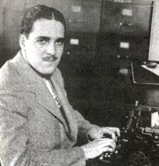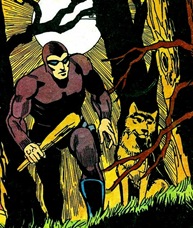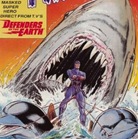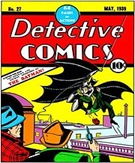It’s time for the Ball vs. Bat, and every cricket fan is tuning into the (NR)IPL Season 2 in Zulu’s Country, which I must admit for its publicity and glamour is not living up to the euphoria set during the previous edition in India. But, if you are not amused with that, then you could always tune-into the anonymous blogger, who is stirring up all the news from behind the scenes. Truth or not, it is something everyone is gunning for at the moment. Enjoy them, I do!

 Coming back to Comicology, I must admit the last post featuring the start of Phantom Series, was one of the ambitious project which I ever undertook at Comicology, both in terms of time and effort put forth. I was pretty much happy for the fact it was received well among the comicologists. In return I vouch to feature the concluding parts in the coming weeks, with fair share of information laced all along, while maintaining the tempo of the series.
Coming back to Comicology, I must admit the last post featuring the start of Phantom Series, was one of the ambitious project which I ever undertook at Comicology, both in terms of time and effort put forth. I was pretty much happy for the fact it was received well among the comicologists. In return I vouch to feature the concluding parts in the coming weeks, with fair share of information laced all along, while maintaining the tempo of the series.
What we have as a subject for our current post, is the recent media briefing about Walt Disney Comics entering India, after a long time. If not for others, It brought back all those childhood memories of watching the Mickey Mouse, Donald Duck, Uncle Scrooge of Disney’s eternal characters, both on animated TV series and in the comic books. Before we look further on the Disney’s earlier Comics foray in India, here is the excerpt from the Media News:


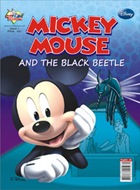 Walt Disney Company (India), has announced a licensing agreement with Indian publisher Diamond Comics to publish Disney comic books, both in English and Hindi in India, under their Junior Diamond brand.
Walt Disney Company (India), has announced a licensing agreement with Indian publisher Diamond Comics to publish Disney comic books, both in English and Hindi in India, under their Junior Diamond brand.
Roshini Bakshi of Disney said, "The comics offer a story of adventure and fun for every child, and for the child in us all. The launch of comic books in Hindi, reinforces our commitment to localize our stories and connect with the Indian consumers through content, that is appealing and relevant."
Featuring Disney's characters, Mickey Mouse and Donald Duck, the 32-page comic book will be priced at INR 25. Disney is gunning to reach 10,000 points-of-interest within the first month of launch.


Disney also plans to launch comic books on its proprietary character of Princess, which includes titles such as Snow White & Seven Dwarfs, Cinderella among others. Also on the cards are comic books in regional languages for the south India market. To start with Junior Diamond will be publishing the Mickey Mouse & Donald Duck titles also in Hindi.
Even though Diamond Comics (most famously known for Pran’s Chacha Choudhary, Pinki, among others) has a publishing industry experience of 70 odd years; their newer division Junior Diamond brand is still at its infant state. The last known attempt of Junior Diamond was to base comic books out of the Bollywood movie Roadside Romeo, which both bombed at theatres and newsstands respectively. But it looks the partnership with Walt Disney during that venture, has paved the way Disney Comics deal. (Read more about Roadside Romeo, on our 2008 Movies Round-Up at Comicology, here)
This time around with the partnership of Walt Disney, and the attractive pricing model of INR 25, I hope they turn the tide and continue publishing Disney’s Comic books which were missing out from the all Comic Book scenario in India. But, this is not the first time Walt Disney Comics is making it into India. In fact there were some well received earlier accounts, and let’s look into some of those, to mark this occasion.
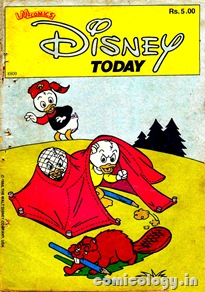 Disney & Living Media: Disney Comic Book’s first real attempt to penetrate the Indian Market, was through Living Media, which is still known widely for their long running magazine, India Today. A new title named LM Comics was created for this venture, and it was published as a fortnightly comics magazine, named Disney Today, mainly carrying the Disney’s world famous characters.
Disney & Living Media: Disney Comic Book’s first real attempt to penetrate the Indian Market, was through Living Media, which is still known widely for their long running magazine, India Today. A new title named LM Comics was created for this venture, and it was published as a fortnightly comics magazine, named Disney Today, mainly carrying the Disney’s world famous characters.
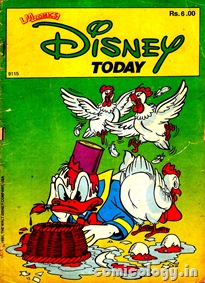 Not much is known like how long the publication was in business, but their another children's magazine, Target, which was once said to be the only competitor to the evergreen Tinkle Children's magazine, ran from 1980 to 1995. (Read more about Target and its inspiration for Tinkle’s Shikari Shambu in our exclusive post at Comicology, here)
Not much is known like how long the publication was in business, but their another children's magazine, Target, which was once said to be the only competitor to the evergreen Tinkle Children's magazine, ran from 1980 to 1995. (Read more about Target and its inspiration for Tinkle’s Shikari Shambu in our exclusive post at Comicology, here)
So LM Comics should also have run along the same period, by both feeding out of each others success. During Disney Today’s famed run, it was often referred as the only comics magazine close enough to the popularity of Indrajal Comics. They were both fortnightly, and had a standard 32 pages of A4 size. Disney Today was priced from INR 5 to INR 6 during its run. The issues were assigned a 4 digit number, which comprised of the year and chronological issues number (For eg., an issue released on 1988 as the 14th issue of that year, will be numbered as 8814).
LM Comics was published from its then head office located at New Delhi (Living Media India Pvt. Ltd., 316 Competent House, Connaught Place, New Delhi 110 001). The packaging of the magazine, was top-notch, and the printing with colored pages make them a collectors item even today. I am fortunate hold a few of those issues in my collection.
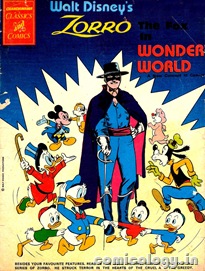 Disney & Chandamama: During the Same period, from October 1980, the Chennai based Chandamama also had a publishing deal with Walt Disney in India and had released two titles, starting from the Disney’s Wonder World series in Chandamama’s Classics & Comics (C&C) brand, and later a separate title which carried the adventures of other Disney characters like Zorro, Snow White, etc. under the Chandamama Book Shelf (BS) brand. (Read more about Chandamama’s recent 60 years celebration with their Coffee book Collector’s edition, here)
Disney & Chandamama: During the Same period, from October 1980, the Chennai based Chandamama also had a publishing deal with Walt Disney in India and had released two titles, starting from the Disney’s Wonder World series in Chandamama’s Classics & Comics (C&C) brand, and later a separate title which carried the adventures of other Disney characters like Zorro, Snow White, etc. under the Chandamama Book Shelf (BS) brand. (Read more about Chandamama’s recent 60 years celebration with their Coffee book Collector’s edition, here)
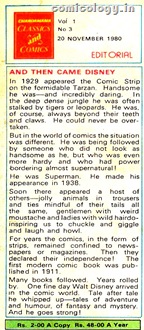 Refer to this editorial featured in their 3rd edition, which talks a great deal about the Disney and its impact to the Comics Industry as a whole.
Refer to this editorial featured in their 3rd edition, which talks a great deal about the Disney and its impact to the Comics Industry as a whole.
Chandamama seems to have started both the C&C and BS series especially to feature the Walt Disney’s Comic books. I doubt how successful was the series as I couldn’t see any titles dated after 80’s.
The C&C series were numbered like Indrajal Comics, Vol.1-No.1 (prompting they were planned as Weekly), etc. and was priced at INR 2, while the BS series, which was released monthly, were numbered sequentially, and were priced INR 3.50, during its run.
One of the problems with the packaging of these comics, was their idea of waxing the covers, instead of laminating it. As it turns out the Paperback covers with the wax coat, means that they are prone to damage and break through years in storage, making it very hard to maintain it for collection. I own a few titles from these series, and it still hurts every time I turn around to read them and find that some part of it breaks away and spoils the overall collection. Chandamama could have done better to avoid it.
Nevertheless, for the sheer reason that it was part of the 1980’s comics euphoria of India, it certainly deserves a place in your comics collection. Here are few covers from the series.
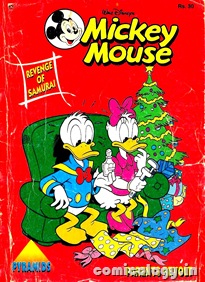 Disney & Egmont: Can you talk about American Comics publishing in India, and miss out from mentioning Egmont? Well, Egmont was also in the reckoning during late 90’s, taking up the mantle to release Walt Disney Comics in India.
Disney & Egmont: Can you talk about American Comics publishing in India, and miss out from mentioning Egmont? Well, Egmont was also in the reckoning during late 90’s, taking up the mantle to release Walt Disney Comics in India.
Denmark based Egmont International, entered India in 1997, with a joint venture with Indian Express group. The resultant company was named Indian Express Egmont Publications Ltd. (IEEPL), and one of their first launches was bringing the Walt Disney Comics titles to India, for the obvious reason that they have a long publishing record in Denmark for Disney titles.
They released two monthly titles named Mickey Mouse and Mickey Mouse Digest. They were of B5 size, and were priced at INR 20 and INR 30 (for Digest with 96 pages. Egmont is known for the re-release and re-prints of the same titles, most evidently noticed with their Phantom editions.
(Phantom editions of Egmont will be covered in detail in our Phantom series at Comicology soon).
So the reprints were even evident on the Mickey Mouse titles. The original print issues ran from 1995 to 1996, in the process releasing a total of 32 Digests. In 2000, after getting the nod from Foreign Investment Promotion Board (FIPB), Egmont bought the complete stake of its Indian arm from the Indian Express group, for a reported sum of INR 2 Crores.
In 2002, under their newly formed Egmont India venture, they published 16 Mickey Mouse Double Digests, which were all reprints from the Original Mickey Mouse Digests released in late 90’s. This time the size was reduced to A4, to go along with other Digest formats in the book shops. The titles were initially priced INR 60, but was later changed to INR 65.
Egmont’s Mickey Mouse Digests and Double Digests, were one of the best format for any comics enthusiastic to add to his collection. The only problem was the pricing, which was way too high for the time it was released. Which could be the very reason why the series never made a long run.
Disney in Tamil: During their run, Egmont also published few titles of Donald Duck/Mickey Mouse in Tamil. The translation was one of the poorest attempts to say the least, so let’s not discuss much into that failed attempt.
When it comes to translation in Tamil, there is no denying the fact that Lion Comics/Muthu Comics Editor S.Vijayan scores all the points. He had his own Tamil version of Donald Duck in his another famous Tamil comics and now defunct brand, Mini Lion, for a short span. More on that while we look at those Mini Lion title in the future at Comicology. Those titles does deserve a special mention for sure.
 So the start-stop publishing of Walt Disney’s eternal characters are in for a long haul, with Diamond Comics jumping in the foray to market Mickey Mouse, Donald Duck Comics in India, which makes for an interesting wait. Be assured that you would hear about the titles and their review at Comicology, whenever the hit stands, which is expected to happen in the a couple of months.
So the start-stop publishing of Walt Disney’s eternal characters are in for a long haul, with Diamond Comics jumping in the foray to market Mickey Mouse, Donald Duck Comics in India, which makes for an interesting wait. Be assured that you would hear about the titles and their review at Comicology, whenever the hit stands, which is expected to happen in the a couple of months.
Especially, when the New York based Disney’s comic books, which publishes 274 million copies of children’s magazines worldwide, are losing its stature and popularity in its parent country (evident through eroded sales in recent years), India may be a market which they can flourish on. Let’s stay hopeful.
Also in Junior Diamond's Disney review post we will discuss about the author who was never given due credit for all these wonderful Disney comics, which we have come to know of. Talking about him would be the main aspect for the next Disney post at Comicology. Stay Tuned.
As a Bonus, to all the readers who read the post till its end, here are the covers of the Egmont’s 16 Double Digest Series, from my collection, which were originally on sale in 2002. Some of them were still available on bookstores, when I last checked.
So use them as a checklist for your next shopping trip, or simply enjoy the wonderfully drawn Disney Covers. Until, our next post, Adios Amigos!
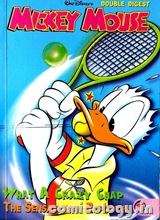 |  |  | 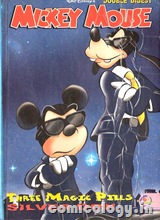 |
 | 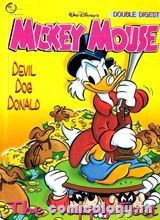 | 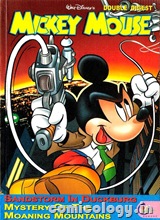 |  |
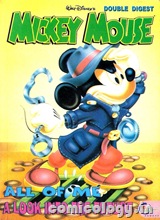 | 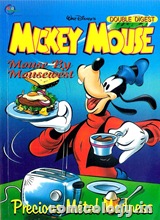 | 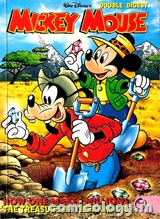 | 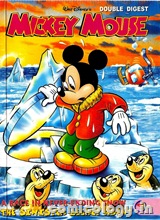 |
 |  |  |  |

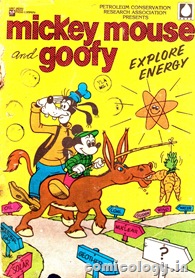 Tail-Piece: Today (Apr-22) is celebrated as the Earth Day, to save the mother earth. There are plenty of ways in which we could do so, starting with a few things right from our home, and our way to office, to know more follow this link. Let’s do our bit for the good cause.
Tail-Piece: Today (Apr-22) is celebrated as the Earth Day, to save the mother earth. There are plenty of ways in which we could do so, starting with a few things right from our home, and our way to office, to know more follow this link. Let’s do our bit for the good cause.
Now, a fellow comicologist, did ask me If I would contribute to Mother nature, by digitizing the comics archive I hold. Well, as much as I agree with the concept, which saves paper and ultimately the trees, it’s certainly not on my wish-list. I will safely pursue other options. ;)
Not to forget a point that, our own Mickey Mouse and Goofy were once featured in a comic book for Save Oil campaign, and thus save Mother Nature. To go along with the Earth Day celebration, here is the cover of that unique issue. Enjoy Reading. Adios Amigos !



